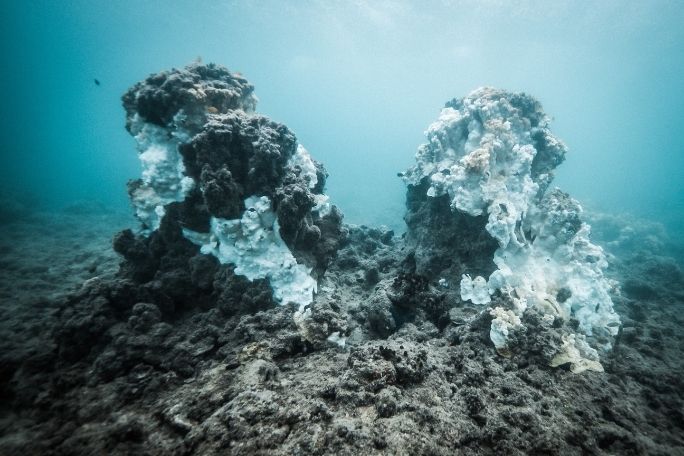Lesson summary
This lesson incorporates clips from Blue The Film as learning inspiration. In this finding out lesson, students will use visible thinking routines to respond to a clip from Blue The Film exploring the importance of the ocean and the changes occurring to ocean ecosystems. They will build their understanding of creative writing and meaning communicated using sensory language. Using visual images and information about the state of the ocean as stimulus, students will develop their creative writing and editing skills through an activity wherein they use sensory language to create meaning about the significance of the ocean.
Learning intentions:
Students will...
- learn and understand how sensory language can be used powerfully and appeal to human emotions and feelings
- learn about the role of the ocean and how sensory language can be used to communicate and engage about various elements of this role in the global environment.
Success Criteria:
Students can...
- articulate facts about the role of the ocean and the issues contributing to ocean change
- demonstrate the use of sensory language in short descriptive passages about the ocean, its beauty and the threats it faces
- demonstrate editing skills in identifying grammatical errors and providing constructive feedback to their peers.
Lesson guides and printables
Lesson details
Curriculum mapping
Australian curriculum (8.4) content descriptions:
Year 7 English:
- Plan, draft and publish imaginative, informative and persuasive texts, selecting aspects of subject matter and particular language, visual, and audio features to convey information and ideas (ACELY1725)
- Edit for meaning by removing repetition, refining ideas, reordering sentences and adding or substituting words for impact (ACELY1726)
Syllabus outcomes: EN4-2A, EN4-4B
General capabilities: Literacy, Personal and Social Capability, Ethical Understanding, Critical and Creative Thinking, Information and Communication Technology (ICT).
Cross-curriculum priority: Sustainability
Relevant parts of Year 7 English achievement standards: Students demonstrate understanding of how the choice of language features, images and vocabulary affects meaning. They understand how the selection of a variety of language features can influence an audience. Students create structured and coherent texts for a range of purposes and audiences. They demonstrate understanding of grammar, use a variety of more specialised vocabulary and accurate spelling and punctuation.
Unit of work: Blue The Film: Our Oceans and Our Future
Time required: 90 mins.
Resources required
- Student Worksheet – one per student
- Device capable of presenting a website, clip and digital worksheet to the class
- Ocean Stimulus Images
- Sensory Writing Example
- Sensory and Descriptive Writing Factsheet
- Ocean Change Factsheet
- Editing Checklist
Skills
This lesson is designed to build students’ competencies in the following skills:
- Collaboration
- Communication
- Creativity
- Critical thinking
- Social skills
- Global citizenship
Additional info
Level of teacher scaffolding: Low – lead students in discussion.
Blue is a feature documentary film charting the drastic decline in the health of our oceans. With more than half of all marine life lost and the expansion of the industrialization of the seas, the film sets out the challenges we are facing and the opportunities for positive change. Blue changes the way we think about our liquid world and inspires the audience to action. Find out how to screen or download the film here. Along with the film is an ambitious global campaign to create advocacy and behaviour change through the #oceanguardian movement. To become an ocean guardian, see the website.


Welcome back!
Don't have an account yet?
Log in with:
By signing up to Cool.org you consent and agree to Cool's privacy policy to
store, manage and process your personal information. To read more, please see
our privacy policy here(Opens in new tab).
Create your free Cool.org account.
Many of our resources are free, with an option to upgrade to Cool+ for premium content.
Already have an account?
Sign up with:
By signing up to Cool.org you consent and agree to Cool's privacy policy to
store, manage and process your personal information. To read more, please see
our privacy policy here(Opens in new tab).